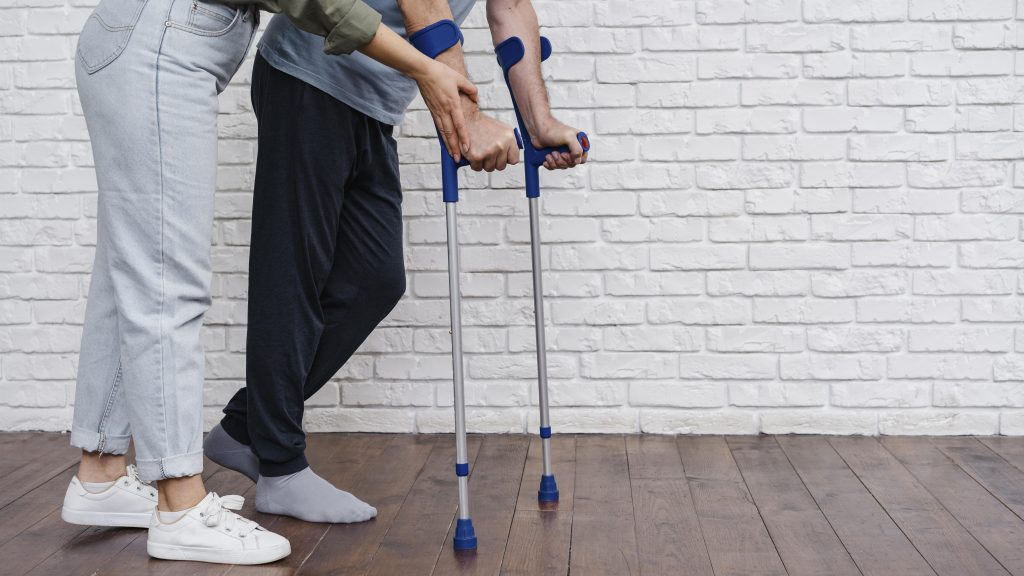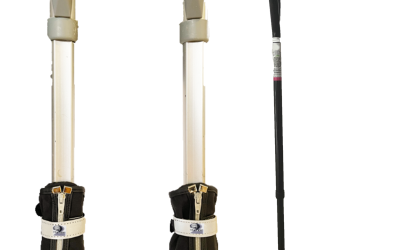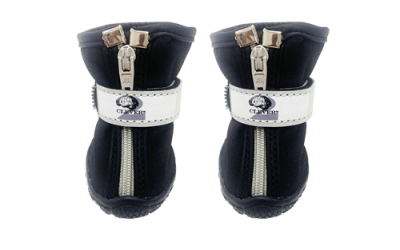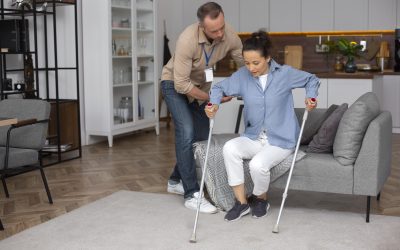
In the realm of mobility aids, forearm crutches stand out as a versatile and ergonomic solution for individuals seeking enhanced stability and support. This comprehensive guide explores the world of forearm crutches, shedding light on what they are, their benefits, and a detailed comparison with other similar products in the market.

Section 1: Understanding Forearm Crutches (Approx. 200 words)
Forearm crutches, also known as elbow crutches, are mobility aids designed to provide support to individuals with temporary or permanent mobility challenges. Unlike traditional underarm crutches, forearm crutches offer a different level of support by redistributing the weight through the forearms, reducing strain on the hands and wrists. Their unique design includes a cuff that fits around the forearm and a handle for grip, providing users with greater control and stability during movement.
Section 2: Benefits of Forearm Crutches (Approx. 300 words)
Forearm crutches come with a myriad of benefits that cater to users’ comfort and safety. The ergonomic design helps minimize pressure on the hands and wrists, reducing the risk of repetitive stress injuries. The distribution of weight through the forearms enhances stability and allows for a more natural walking pattern. Furthermore, forearm crutches offer a higher level of maneuverability, making them suitable for individuals with varying mobility needs.
Section 3: Comparison with Other Mobility Aids (Approx. 500 words)
Traditional Underarm Crutches: While traditional underarm crutches serve a similar purpose, they come with notable differences. Forearm crutches provide better stability and a more comfortable user experience, as the weight is distributed over a larger area, reducing strain on the underarms.
Walkers: In comparison to walkers, forearm crutches offer a more dynamic and versatile solution. Walkers can be bulkier and less maneuverable, making forearm crutches a preferred choice for those who require support but also value freedom of movement.
Canes: Canes are ideal for individuals who need minimal support, but forearm crutches offer a higher level of stability. Forearm crutches provide better control, especially for those with more significant mobility challenges.
The transition from the wet and slippery outdoors to dry indoor environments can be particularly daunting. Moisture on crutch and cane tips can not only pose a slip hazard but also create safety concerns for indoor flooring. Traditional solutions involve wiping crutch or cane tips dry before indoor use on any dry floor surfaces. SafeNDry Crutch Boots eliminate this cumbersome step, making the transition from outdoors to indoors more convenient, you simply need to remove the tiny boots from your crutches-cane tips and you’re ready to go about your business safely.
The SafeNDry Crutch Boots was created to help crutches and cane users navigate the harsh winter-wet conditions. It brings an extra level of security and safety outdoors by providing better traction while keeping the tips dry away from snow, ice and cold conditions that freezes the tips and make them more dangerous. Thanks to its great features, not only it provides security and peace of mind to users in outdoor winter conditions but also when transitioning to indoors dry floor surfaces upon boot removal.
Section 4: Types of Forearm Crutches (Approx. 200 words)
Forearm crutches come in various types to accommodate different user needs. The standard forearm crutch features an adjustable cuff and handle, allowing for a personalized fit. Ergonomic designs, shock-absorbing features, and collapsible options are also available, catering to a wide range of preferences.
Section 5: Selecting the Right Forearm Crutches (Approx. 300 words)
Choosing the right forearm crutches involves considering factors such as height, weight capacity, and individual comfort preferences. Adjustability is a key feature, allowing users to customize the crutches to their specific requirements. Reviews and expert recommendations can be valuable resources during the selection process.
Section 6: Innovative Features in Forearm Crutch Design (Approx. 200 words)
Recent advancements in forearm crutch design have introduced innovative features. These may include shock absorption mechanisms, foldable designs for easy storage, and materials that balance durability with lightweight construction. These features enhance the overall user experience and make forearm crutches a cutting-edge choice in the realm of mobility aids.
Section 7: Common Concerns and Misconceptions (Approx. 200 words)
Addressing common concerns and misconceptions about forearm crutches is essential to provide potential users with accurate information. Debunking myths related to discomfort, difficulty in use, or limited adaptability can help individuals make informed decisions about choosing forearm crutches as their preferred mobility aid.
Conclusion:
In conclusion, forearm crutches emerge as a superior choice in the realm of mobility aids, offering a blend of comfort, stability, and adaptability. As advancements continue to enhance their design, forearm crutches stand as a testament to the evolving landscape of assistive technology, empowering individuals to navigate life with greater ease. Whether for temporary use during recovery or as a long-term mobility solution, forearm crutches prove to be a reliable and versatile ally on the journey to enhanced mobility and independence.





